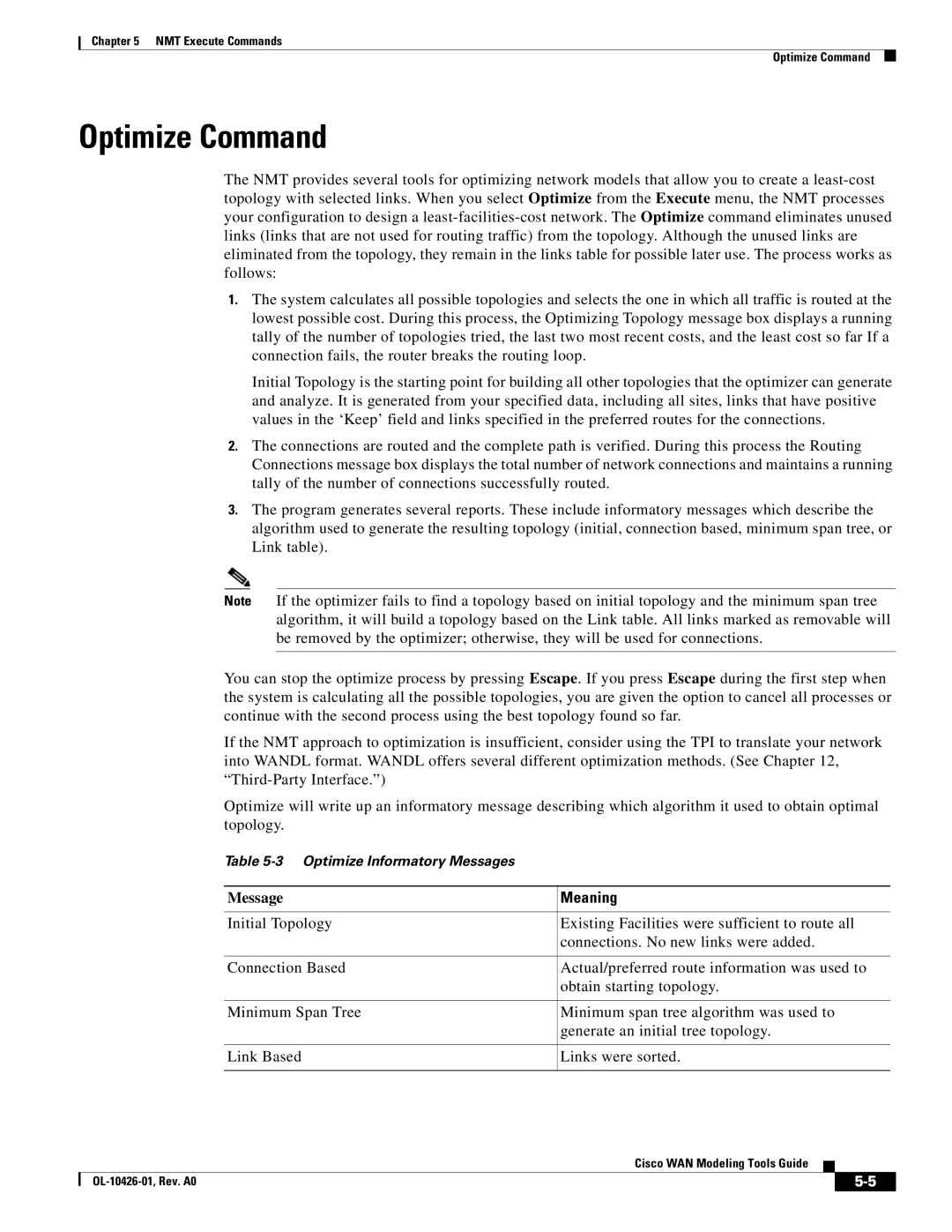OL-10426-01 specifications
Cisco Systems OL-10426-01, a key component in the realm of networking technology, represents a significant advancement in the field of networking and IT infrastructure. This product focuses on enhancing network performance, security, and management capabilities within organizations, making it a preferred choice for enterprises seeking to streamline their operations.One of the main features of Cisco OL-10426-01 is its robust security framework. By incorporating advanced encryption protocols and security technologies, it ensures that data transmission across networks remains confidential and secure from potential threats. This focus on security aligns with contemporary needs, as organizations increasingly face challenges related to cybersecurity breaches.
Another critical characteristic of the OL-10426-01 is its scalability. Designed to support a range of business sizes, the technology can easily adapt to growing demands, allowing organizations to expand their network resources without significant overhauls. This scalability provides a cost-effective solution for businesses that anticipate growth and change in their networking requirements.
OL-10426-01 also boasts enhanced performance capabilities. With the implementation of advanced routing and switching technologies, it ensures that data flows efficiently within the network, minimizing latency and maximizing throughput. This is particularly beneficial for applications that require real-time data processing, such as video conferencing and cloud-based services.
In terms of management, Cisco OL-10426-01 is equipped with sophisticated tools that allow for streamlined network operations. Administrators can utilize intuitive interfaces for monitoring and managing network performance, gaining valuable insights into potential bottlenecks and areas for improvement. This ease of management reduces the burden on IT staff and enables organizations to maintain high levels of operational efficiency.
Additionally, the OL-10426-01 integrates seamlessly with existing Cisco products, ensuring compatibility and interoperability within mixed environments. This feature is vital for organizations that have invested in Cisco's extensive portfolio of networking solutions, as it facilitates a cohesive IT ecosystem.
In summary, Cisco Systems OL-10426-01 is characterized by its commitment to security, scalability, performance, and ease of management. By leveraging these features, organizations can create a robust networking environment that meets their evolving needs and supports their long-term goals in an increasingly digital landscape. With Cisco OL-10426-01, enterprises are equipped to thrive in a competitive market, backed by reliable and efficient networking solutions.

